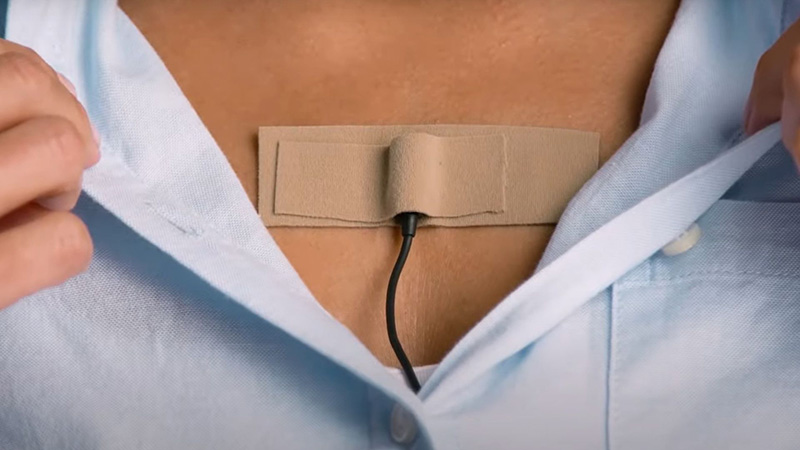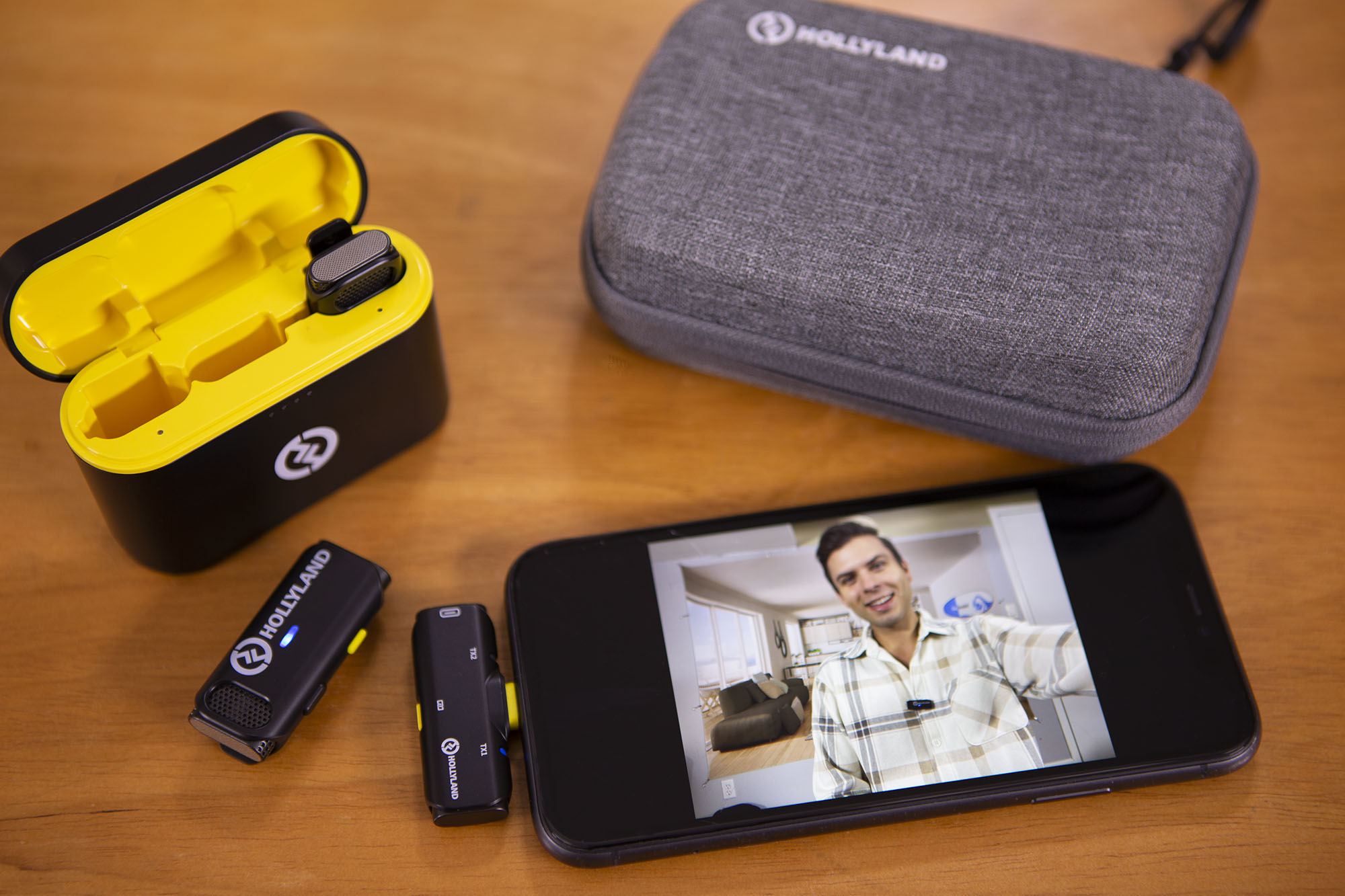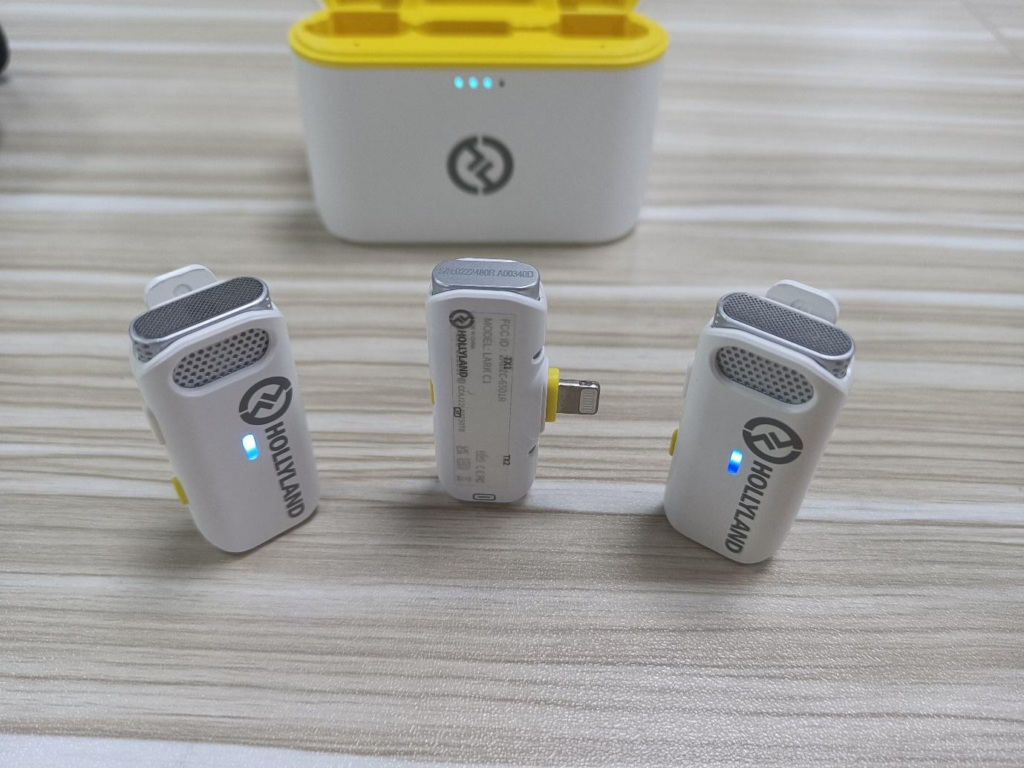
For someone who shoots with their smartphone, having to depend on the built-in microphone is a major setback. For every videographer, YouTuber, and social media influencer focusing on video content creation, the audio is the best part of the video. That realization forces content creators to look for an external mic.
However, the problem with an external wired mic is their limited range. Plus, you have to keep the mic connected to the camera, which means you can’t record someone from a distance. Not to mention that it looks plain ugly to have a wire dangling in your frame. The natural solution is to get a wireless mic system.
For someone who has been recording with the default mic on their phone, an external mic like the Hollyland Lark C1 can be a game-changer. All of a sudden, it opens creative possibilities that they could never think of. And I have not even gotten into the audio quality of the Lark C1.
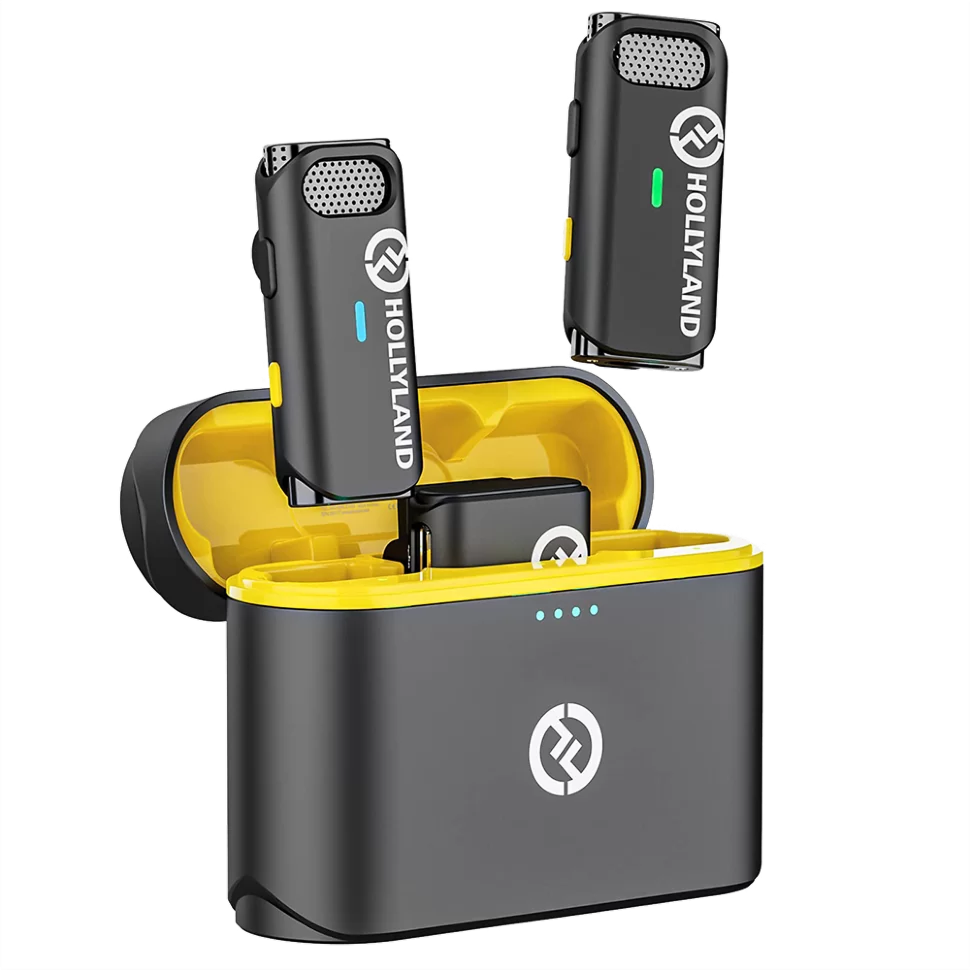

Hollyland Lark C1 - Wireless Microphone for Mobile
A plug-and-play wireless microphone system designed for mobile devices.
Key Features: MFi-certified | Hi-Fi Audio | 32 Hours Duration
The Lark C1 fills in the demand that exists for a proper wireless camera system for your smartphone. Let’s look at this wireless microphone system’s specifications and learn more about its performance and capabilities.
Pros
- Lightweight, the receiver weighs only 7 grams.
- Transmitter weighs 11.8 grams.
- Designed exclusively for smartphone systems.
- Working range of 656 feet.
- The frequency range of 2.4 GHz.
- Advanced Frequency Hopping.
- Exclusive Android and iPhone versions are available.
- Comes in both Solo and Duo versions for mono and stereo-specific work.
- Active noise cancellation is available.
- LED indicators indicate charging and recording status.
- Plug and play design.
- It comes with a handy app to do limited fine-tuning and adjustments.
- Battery life committed is 8 hours which is good.
- A Lark C1 Solo version is also available.
Cons
- Works in the 2.4 GHz frequency.
- It is priced higher than the Lark M1 Duo version.
- Not many options to control the individual mic inputs volume.
- No option to attach a lav mic.
Specifications
- Ideally suited for mobile phone video work.
- Comes in duo and solo options.
- The receiver works in dual-channel mode.
- The dual transmitters/mics work in an omnidirectional pattern.
- Works in the 2.4 GHz spectrum.
- Adaptive frequency hopping technology for less signal interference.
- Plug and play with minimal setup time.
- Active Noise cancellation handles noisy situations very well.
- Extremely lightweight.
- Charging cum storage case provided.
- The charging case continuously charges the transmitters and the receiver on the go.
- The charging case takes about 1.5 hours to charge.
- Transmitters and receivers retain about 8 hours of charge.
- Charge indicator on the case.
- Indicator LEDs to tell you the battery status of each transmitter.
- Comes in both Android and iPhone versions.
- No option to plug in a lav mic to the transmitters.
Hollyland Lark C1 price and availability
The Lark C1 is available at online and offline stores worldwide. You can get it at any camera, audio, or hobby store. Pricing for a mobile-specific audio solution is a little on the higher side – $179 for the duo system. But the benefits far outweigh the price. Let’s look at the rest of the features of the Lark C1 in this detailed review and find out more about its suitability for the purpose of phone video work.
Unboxing and first impressions
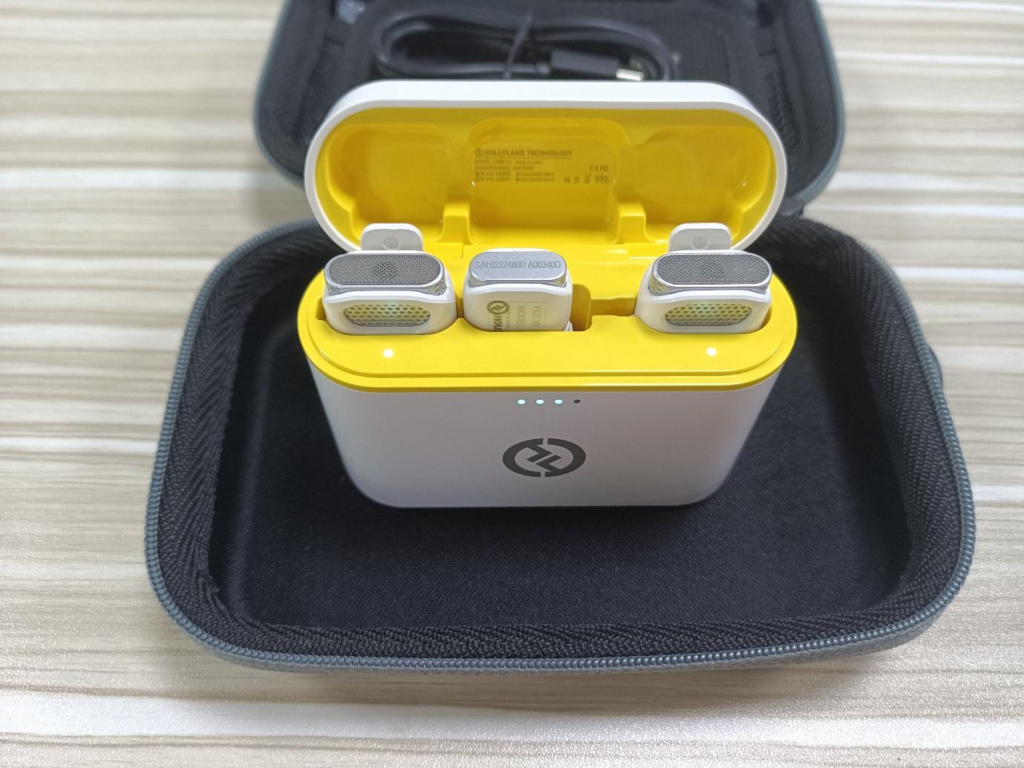
When I was unboxing the Lark C1 system recently, I was kinda surprised to see it for the first time in my hands. Why? Because the Lark C1 transmitter looks so identical to the Lark M1 I recently reviewed.
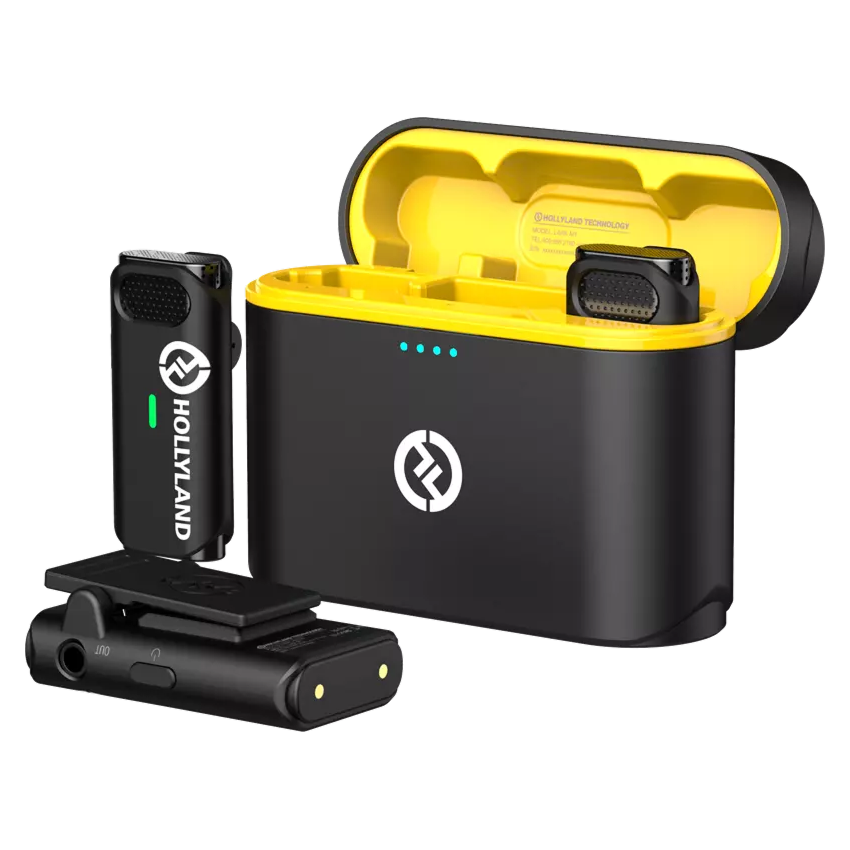

Hollyland LARK M1 - Tiny Wireless Microphone
A lightweight and user-friendly wireless microphone with one-click noise cancellation.
Key Features: Hi-Fi Sound Quality | Tiny & Light Design | Plug and Play
In fact, the charging case of the Lark C1 too is identical to the charging case of the Lark M1. I don’t know why they decided to make the designs so strikingly similar. Someone who may have both systems in their bag can get easily confused as to which one is which.
Is it a deal breaker? I wouldn’t think so. The Lark C1’s design is simple and functional, just like the Lark M1’s.
Build quality and design
Like the Lark M1, the C1 is a lightweight device that weighs about 11.8 grams (transmitter). You will never notice something attached if you wear this transmitter on your shirt collar.
I feel that for a run-and-gun work style, a lightweight wireless mic is an absolute must-have tool. However, the audio quality is the problem with many of the cheaper entry-level wireless mic systems. Thankfully, the Lark C1 has superb audio quality.
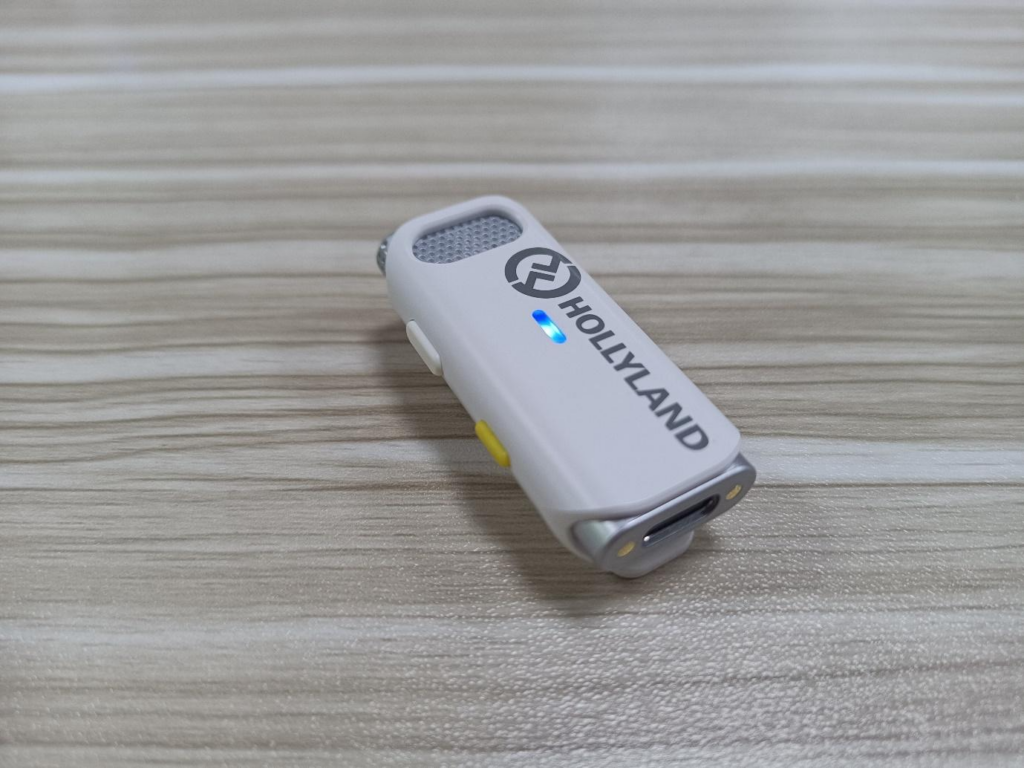
The Lark C1 is a simple design. I was reminiscing about the Lark M1 when I first pulled it out of the charging case and held it in my hand. As I mentioned in the previous segment, the two designs are almost identical.
It’s hard plastic, and it feels solid in the hands. Even with the transmitter and the receiver inside the charging case, the case feels very light. Come to think of it, those who shoot with a smartphone would ideally want to keep things light when they’re traveling, and in that sense, the C1’s case doesn’t take up much space inside your bag.
When I was reviewing the Lark M1, I mentioned that the charging case’s design was simple. I can say the same thing about the charging case of the Lark C1. It’s simple, but it gets the job done, and that’s the most important thing.
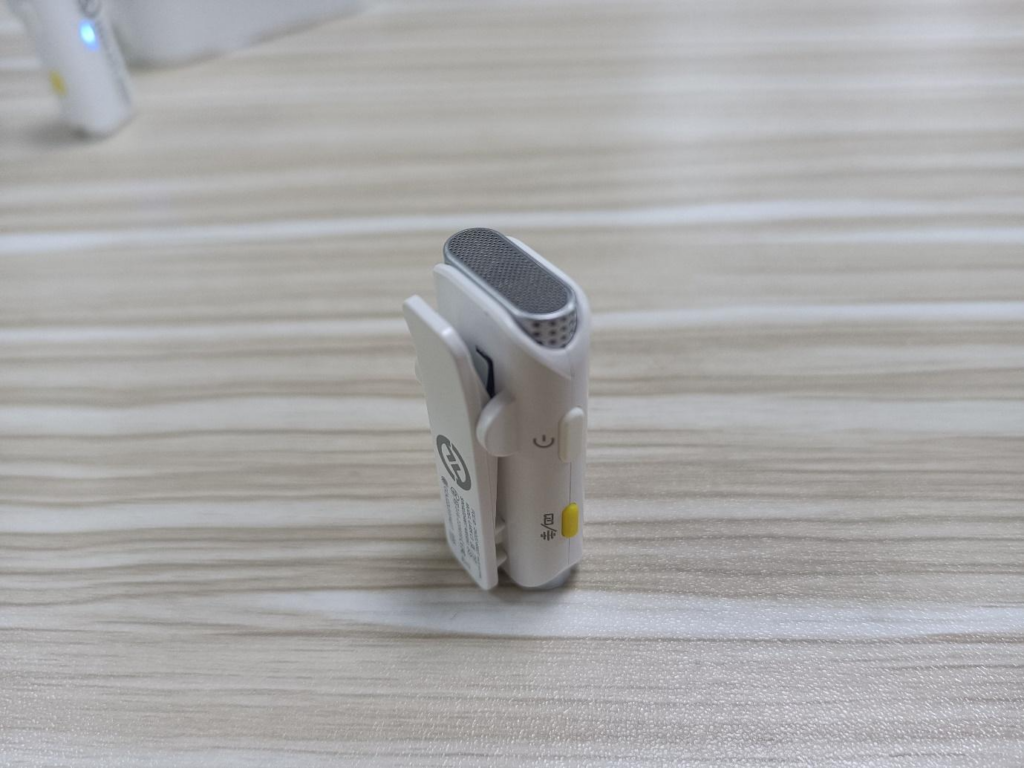
The transmitters/mics have two sets of buttons on them. One is for switching the mic on and off, and the other is for the Active Noise Cancelling function.
Considering that this is a dedicated design for smartphones, I would have expected that the transmitter would have included a record button. If you’re a one-man setup and have to do an interview, that would mean you must run to your phone, start the recording and then run back to your position.
Having said that, I have shot with DSLRs and am used to this routine. It’s a small price to pay, and you can always edit out the unwanted footage during post-processing. I would have been happy to see a “record button,” but the absence of this isn’t going to outweigh the benefits.
Setup and use
There isn’t much setting up to do except that you need to plug in the receiver to your Android smartphone using the USB-C connector. Similarly, for iPhones, the connector on the receiver directly plugs into your phone’s Lightning port.
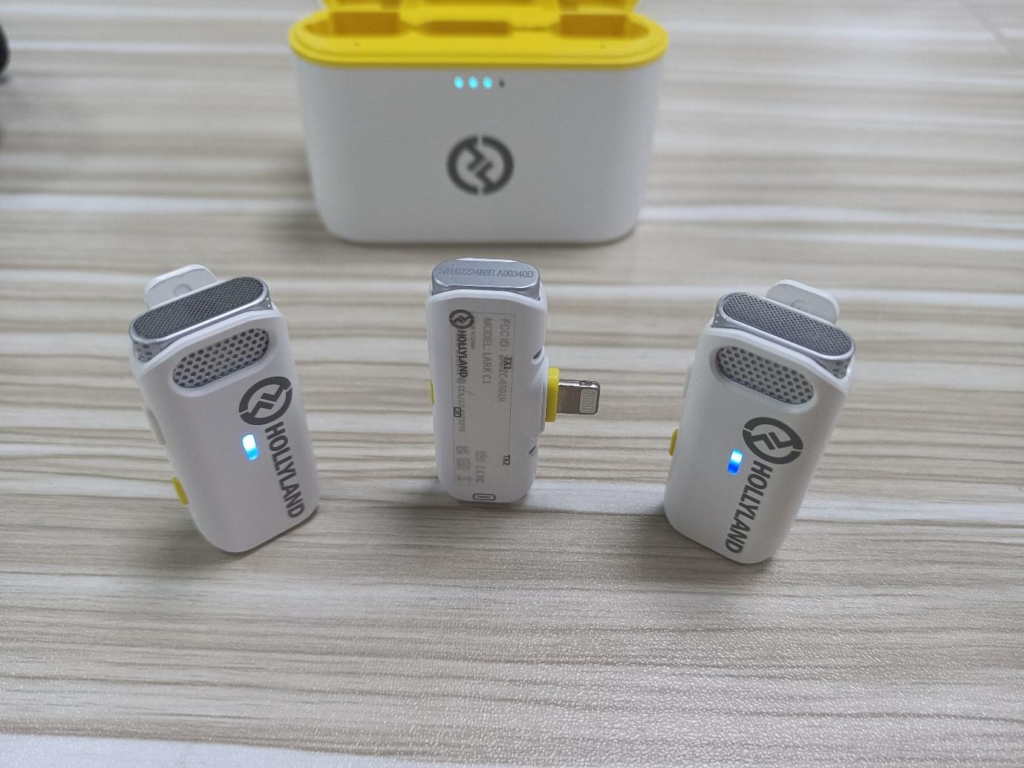
The transmitters and the receiver get automatically paired when pulled out of the charging case. They also connect with the Lark app and are ready to be controlled and fine-tuned from within the app. This makes the initial setup and working that much easier.
Speaking of plugging in, that reminds me that there is no option to plug in an external mic to the transmitter. That’s one option that I would have loved to see in the C1. A small lav mic is a practical demand if you want to keep things discreet, but in the absence of that, I wouldn’t mind using the transmitter of the C1 for my audio.

The system is supported by a Lark App – Larksound – that you can download for your phone. There is an Android and an iOS version. The app allows you to make the fine tweaks that you would normally do using dedicated buttons on a transmitter/receiver. You can control the input level and the noise-canceling features of the system.
Performance and audio quality
Overall let me start by saying that I like the audio quality of the C1. I was impressed with the M1, and I am impressed with the C1 as well. Having said that, there are a few things that I noticed and wanted to share.
The first thing is that the C1 uses the 2.4 GHz frequency. This is the most common signal spectrum, which means it’s usually very cluttered. Signal interferences can drag the quality of the audio experience.
However, this is where the Lark C1’s auto-frequency hopping technology comes into play. Just like in the Lark 150 and the Lark M1 that I reviewed recently, the Lark C1 is able to scan its immediate environment and choose the channel that has the least interference for a smooth audio experience.
The system has a range of 650+ feet when there is a clear line of sight. In case of obstacles between the transmitters and the receiver, the signal strength drops, and you can get a decent transmission for about 140 feet or less.
Additionally, the C1 has Advanced Noise Cancelling (ANC), which does an excellent job of canceling ambient noise. There is, however, a downside, and that’s – the audio is sometimes muffled.
Additionally, in high background noise areas, such as the middle of a street or a marketplace, you will find that the ANC does a great job of controlling ambient noise. But at the same time, it does tend to have an impact on the voice audio.
So, just like in the case of the M1, I suggest that you do a quick audio check before the main recording session starts and check the audio quality. You can also adjust the ANC levels (along with the audio input levels) using the Larksound app.
I want to add to this the issue of echoing or, in this case, the absence of it. With some cheaper dual-mic wireless systems, I have faced this problem where the audio from one speaker gets captured by the second mic, and that produces an annoying echo.
With the Lark C1, I found no echo issues in my recording. This makes the Lark C1 an automatic choice for me when I am shooting with my smartphone.
Battery life and charging
Approx battery life of the transmitters is 8 hours. However, when you’re using both transmitters in the stereo mode, the battery life you can extract drops a little.
Speaking of charging, there are indicator LEDs that tell you the charge status of the case, which is a nice touch as you can easily find out how much juice is left in it.
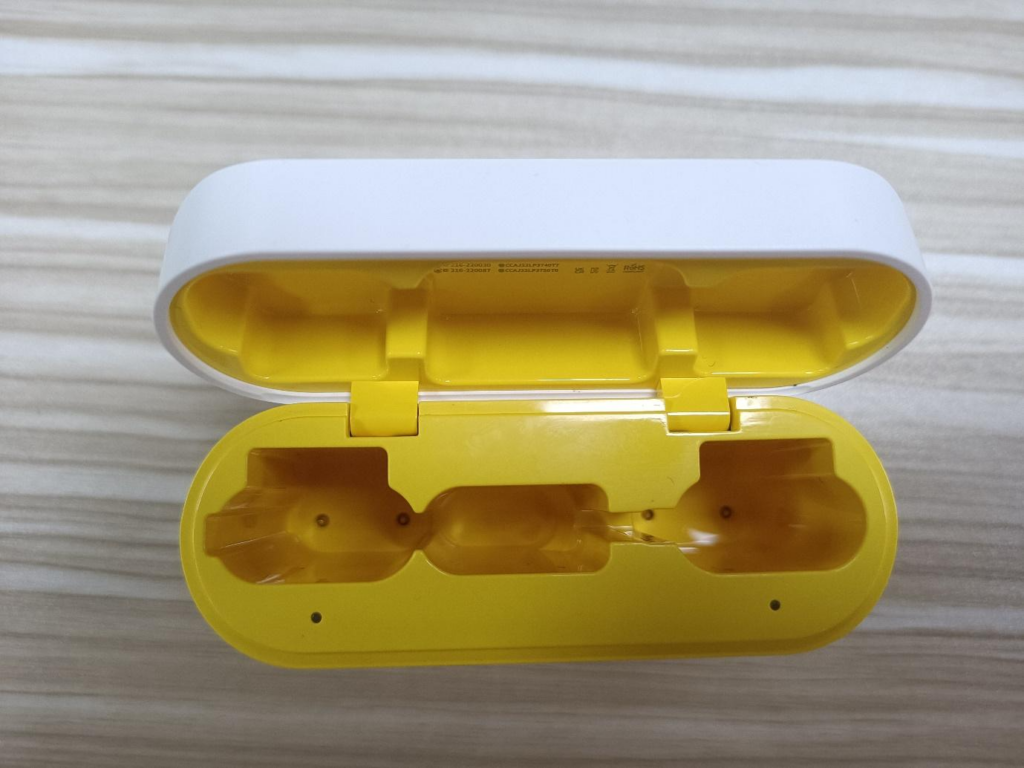
The fully charged charging case, which has a 1400mAh capacity, can easily charge the transmitter and the receiver in 1.5 hours. The charging case takes about 1.5 hours to fully charge up using a USB-C cable.
The transmitters and the receiver can be charged using a USB-C type cable. Just in case the charging case runs out of juice, you can use this option to recharge the system.
Still, on the subject of charging, the receiver has a charging port. That allows you to charge your phone while recording if you ever need to.
Conclusion
There is no denying the fact that the first camera that a generation of users knows is their smartphone. And with smartphones becoming increasingly powerful, it’s only reasonable that many content creators resort to using them as their primary (and only) camera.
Having said that, the limitations posed by the not-so-great built-in mic of a smartphone plague most content creators. This is where dedicated smartphone solutions like the Lark C1 wireless mic come into the picture.
With the Hollyland Lark C1, you now have a dedicated wireless microphone system that allows you to record better-quality audio, pushing the production value of your videos. Whether you’re a social media influencer, a content creator, or working as a reporter, a wireless mic system tailor-made for your smartphone is a must-have.
Also, because this is a wireless recording system, your subject can be anywhere within a distance of 650+ feet, and you would still be able to record crisp audio quality with a clear line of sight. That gives you the added advantage of movement within the frame while recording. If you have two subjects in the frame, they can be moving around, and there will be no impact on the audio quality as long as there is a clear line of sight.
Overall I would strongly recommend the Lark C1 for anyone looking for a reliable solution for recording high-quality audio with their smartphone-shot videos. Simplicity, reliability, and functionality are the USPs of the Lark C1.
To sum up, if you’re looking for a more advanced solution, particularly with more audio controls, you should look for something else. But for all other users, the Lark C1 is a great package.
If you’re impressed by the Hollyland Lark C1’s convenience and sound quality, you might also want to explore a versatile wireless lavalier microphone system. It provides crystal-clear audio capture that seamlessly integrates with your smartphone or camera setup, elevating your videos to truly professional standards.

































.png)


